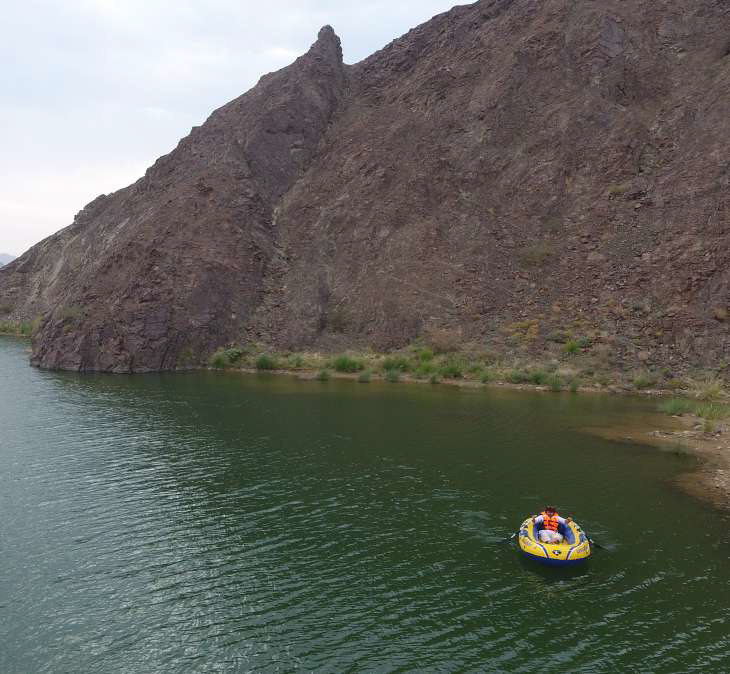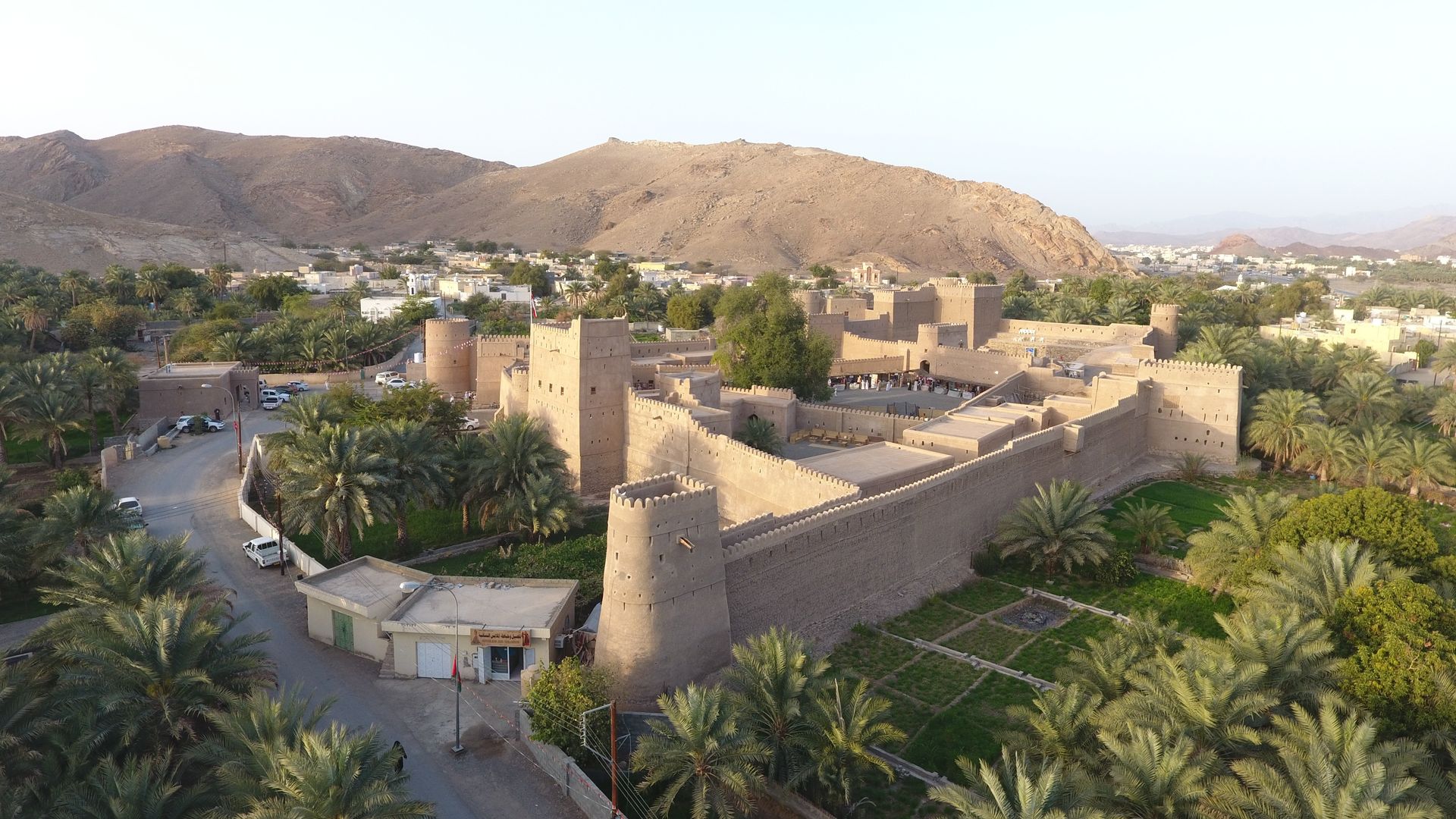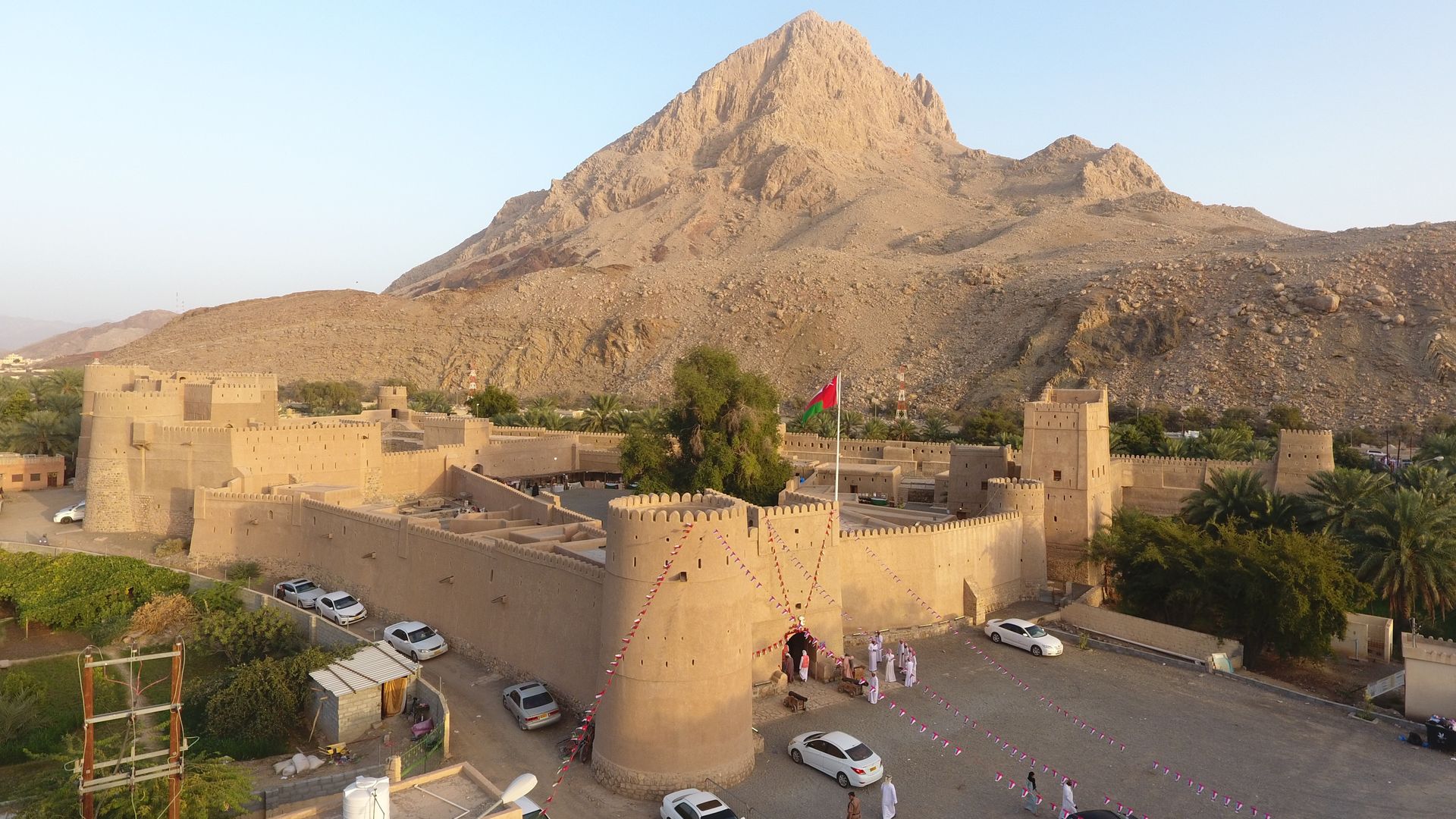ولاية ينقل
تقع ولاية ينقل في محافظة الظاهرة وهي إحدى ولايات المحافظة الثلاث فهي تقع في الجزء الشمالي من المحافظة وتتصل بكل من ولاية عبري من جهة الشرق والجنوب وولاية ضنك من جهة الغرب وولاية صُحار في محافظة الباطنة من جهة الشمال.
تقدر مساحة الولاية بحوالي 3100 كيلومتر مربع. وتشكل ما نسبته 9% من مساحة المحافظة.
يبلغ عدد القرى والمناطق التابعة للولاية حوالي (78) قرية وبلدة أشهرها (مركز المدينة، ويشمل: العلو - الصوادر - البويب - المدام - الصفري -كرش - الجغنة - الخابورة - حيل المناذرة – العقدة - بلدة صيع - بلدة فلج السديرين - قرية البويردة - قرية الروضة - بلدة المري - بلدة غضياء - بلدة الخبيب - بلدة طوي النوامية - قرية الشوعية - قرية المعيدن - بلدة الوقبة - حيل الخنابشة - قرية المسرة - قرية وال - وادي العرشي - وادي الحريم - بلدة بيحاء).
حظيت ولاية ينقل كسائر مدن وولايات السلطنة بفيض وفير من معطيات النهضة المباركة تحت ظل القيادة الحكيمة لمولانا حضرة صاحب الجلالة السلطان هيثم بن طارق المعظم - حفظه الله ورعاه - فانتشرت مدارس التعليم لتغطي مظلتها كافة القرى والمناطق بالولاية البعيدة منها والقريبة، تخرج منها العديد من الكوادر في شتى مناحي العلم وتقلد بعضهم مناصب قيادية ليشاركوا جميعا في مسيرة الخير والعطاء، كما نالت الولاية نصيبها من الخدمات الصحية من خلال المستشفيات والمراكز والمجمعات الصحية،هذا بالإضافة إلى شبكات الطرق ومشاريع الكهرباء والمياه التي أصبحت واقع ملموس ظاهر للعيان، ناهيك عن الخدمات الأخرى كخدمات البريد ومراكز التنمية الزراعية التي حظيت بها الولاية.
ولاية ينقل كانت همزة الوصل في الماضي وحتى الآن بين محافظة الباطنة والظاهرة.. وكانت هي المكان الذي تتمركز عنده قوافل البضائع المسافرة من ساحل الباطنة إلى محافظتي الظاهرة والداخلية، هناك تتوقف القوافل، وتترك حمولتها لتحملها قوافل أخرى تواصل المسيرة الطويلة ولكونها مكان التجميع أو مكان (نقل) البضائع أخذت صفتها وتحولت الصفة إلى الاسم وصار المكان يعرف بـ {ينقل}.
جبل الحوراء: هو شعار ولاية ينقل ويبلغ ارتفاعه أكثر من 1700 متر عن سطح البحر وهو أكبر جبل بالولاية ويقع الجزء الأكبر منه في بلدة الصوادر والتي تعد مركز للولاية، ويوجد في جبل الحوراء مجموعة متنوعة من الطيور ومن الثدييات لا سيما الثعالب والأرانب البرية، وتتواجد في العديد من أجزاءه من الأشجار سلم (شجر) والسمر والسدر والغاف.
حصن حديقة (ينقل): يوجد به الكثير من الرسومات والكتابات ويوجد أعلى الحصن وبالتحديد على قمة الجبل المجاور بئر زينت جدرانه ببعض الرسومات الأثرية.
الأفلاج: تزخر الولاية بمنظومة كبيرة من الأفلاج أعتمد عليها العماني اعتمادا كلياً منذُ القدم في ممارسة النشاط الزراعي حيث وصل الإنتاج إلى حد الاكتفاء الذاتي. وقد بلغ عدد الأفلاج بالولايــة (26) فلج عدي و(46) فلج غيلي، ويوجد ببلدة ينقل منها عــدد (5) أفلاج (فلج العين يعد أكبر أفلاج الولاية من حيث منسوب المياه ثم فلج العلو وفلج المحيدث وفلج الخابورة وفلج حيل المناذرة) بالإضافة إلى العديد من الافلاج بمختلف قرى وبلدات الولاية.
المواقع الاثرية بالمحافظة
قلعة عبري – قلعة السليف وحي السليف – حارة الرمل – حصن العينين – موقع بات الأثري – قلعة العراقي – القلعة السوداء – حصن بيت المراح – حي الشعبانية – بلدة الوقبة – قلعة المناخ – حي المرقوع – قلعة البزيلي – سوق السبيخة
قلعة عبري وقلعة السليف
تقع قلعة عبري في مركز المدينة، بجوار السوق القديم. يعود تاريخها إلى حوالي 400 عام، أنشأها بنو نبهان وأكمل بناءها الشيخ خاطر بن عامر بن راشد اليعقوبي. تضم القلعة عدة مداخل أشهرها: صباح السنسيلا، صباح الحصن (المدخل الرئيسي)، وصباح الوسطي (المستخدم للبرزات). وتحتوي على مسجد كبير لا تزال تقام فيه صلاة الجمعة وبقية الصلوات. تشتهر القلعة بنقوشها التاريخية وآثارها العتيقة، ومنها ثلاث أبراج: الصرم، الغُرابية، وصباح السنسيلا.
قلعة السليف
فقد بُنيت في عهد دولة اليعاربة على يد الإمام سلطان بن سيف اليعربي عام 1718م، أي قبل 300 عام، عند سفح جبل شنبو المطل على وادي السليف. تحيط بها أسوار ضخمة وسبعة أبراج أشهرها برج الرياح. وتُعرف قرية السليف بوجود 110 منزلًا أثريًا، وسوق تراثي، وتصاميم معمارية عمانية أصيلة. تقع القرية على بعد 5 كم من مركز عبري، واشتهرت تاريخيًا بالنخيل والموارد الزراعية، وبموقعها الاستراتيجي المطل على الطرق الشرقية المؤدية إلى عبري، مما منحها أهمية دفاعية.
قرية الرمل
تُعد قرية الرمل موقعًا أثريًا يعود إلى أكثر من 300 عام، تقع في وسط عبري على منحدرات وجبال جبل الرمل.
حصن العينين
يقع على الطريق الرئيسي بين عبري والرستاق، وهو مثال جميل للعمارة العمانية التقليدية.
موقع بات الأثري
يقع في ولاية عبري بمحافظة الظاهرة، ويُعد موقعًا مدرجًا ضمن قائمة التراث العالمي لليونسكو، ويرجع تاريخه إلى الألف الثالث قبل الميلاد. يضم الموقع قبورًا بأسلوب أم النار في الجنوب، وقبورًا على شكل خلية نحل في الشمال، بالإضافة إلى ستة مبانٍ دائرية حجرية كبيرة، بعضها يحتوي على آبار مياه ومحاطة بخنادق مثل برج رجوم. تعود هذه المباني إلى عصر حفيت (3200–2700 ق.م)، وتضم معالم مثل برج الخاتم.
قلعة العراقي
تقع وسط بلدة العراقي، وتضم برجين وغرفًا ومستودعات وثلاثة آبار مياه. القلعة مستطيلة الشكل، مبنية من الحصى والطين والجبس و"السروچ". وتحتوي من الداخل على منازل قديمة وغرف خدم وقاعة ضيافة.
القلعة السوداء (حصن الأسود)
تقع في مقنيات، داد خصيب، على الحافة الشرقية لسهلٍ وادٍ، وبُنيت سنة 972 هـ (1564 م). تضم أربعة أبراج، وتقع على مرتفع صخري يتيح لها إطلالات استراتيجية على المناطق المحيطة.
حصن بيت المراح
يقع في قلب وادي ينقل بقرية الحصن، ويعود تاريخ بنائه إلى ما قبل الإسلام أو القرن 11 هجري (القرن 17 ميلادي). تحيط به مزارع النخيل، ويشتهر ببنائه الطيني والحجري التقليدي، وقد رممته وزارة التراث والسياحة عام 2002.
قرية الشعبانية
تعد من أكبر وأهم قرى ينقل، وتشتهر بمنازلها الطينية التقليدية المبنية بجذوع وسعف النخيل. تعرف بترابط سكانها الذين يتجمعون صباحًا لتناول القهوة العمانية.
بلدة الوقبة
تقع على بُعد 38 كم من مركز عبري، وهي بلدة جبلية ذات مناظر خلابة، تضم أودية مثل وادي بيح ووادي العريشي، مما يجعلها وجهة سياحية. وتتميز بالكهوف الجبلية، وموارد المياه، والمواقع التراثية، مع المحافظة على العمارة العمانية التقليدية.
قلعة المناخ
تقع في ولاية ضنك، وتبلغ مساحتها 1200 م²، وتضم ثلاث أبراج وعدة غرف ومستودعات. وقد رُممت بين عامي 2013 و2017، وتزوّدت بالخدمات الحديثة كالكهرباء والتكييف، مع تسهيلات لذوي الاحتياجات الخاصة.
قرية المرقوع
تقع في حي العزيزية بولاية ضنك، وتُعرف بأهميتها التاريخية والسياحية. تحدها عدة مناطق: الوسطى، العليا، المعزاء، الشكور، والوحشة.
قلعة البزيلي
تقع في قرية البزيلي بولاية ضنك، وشُيدت في عهد اليعاربة بالقرب من مجرى ماء يُعرف باسم فلج البزيلي، وهي من أبرز المعالم التاريخية المحفوظة في المنطقة.
سوق السبيخة
يُعد من أقدم الأسواق التراثية التقليدية في ولاية ضنك، واشتهر بنشاطه التجاري وسط بساتين المياه، ما جعله محط أنظار التجار من مختلف المناطق. ولا يزال السوق وجهة مفضلة للزوار والسكان المحليين.
الفنون التقليدية
الفنون التقليدية
تعكس الفنون الشعبية التقليدية، مثل الرقصات والأناشيد، في ولاياتنا الهوية الثقافية لمواطني سلطنة عُمان. وتُعد هذه الفنون تجسيدًا حيًا للعادات والتقاليد، لاسيما خلال الأعياد الدينية والوطنية، وحفلات الزفاف، والمناسبات الاجتماعية الأخرى. يشارك كل من الرجال والنساء في هذه الفعاليات، والتي تنتشر بشكل واسع في ولايات عبري، ينقل، ضنك، ومنطقة حمراء الدروع. ويمارس أهالي هذه المناطق فنونًا غنية بالإيقاع والشعر، حيث يُلقي الشعراء قصائد في المديح، والغزل، والوصف، والفخر في المناسبات الوطنية والاجتماعية.
تشمل الآلات الموسيقية والإيقاعية المستخدمة في فنون محافظة الظاهرة: طبول الكاسر، الرحماني، والواقف، وهي من أبرز الأدوات التقليدية في المنطقة.
فن العيالة
هو رقصة تقليدية تُؤدى على صفين متقابلين من الرجال. يقف أفراد كل صف متقاربين، ممسكين بأيدي بعضهم، ويحيطون خصور بعضهم بالأذرع الأخرى، في دلالة على التلاحم والتعاون القبلي. وتُعزف الموسيقى بين الصفين باستخدام آلات نحاسية مثل الطبول والدفوف. ويقود الإيقاع رجل يحمل طبلة أسطوانية ذات وجهين تُسمى "الكاسر"، تضفي على الرقصة إيقاعًا نشيطًا متناغمًا مع الشعر المُلقى.
فن الميدان
يُعد من أشهر الفنون الشعبية التقليدية في سلطنة عُمان، ويشترك في أدائه سكان محافظة الظاهرة ومحافظات أخرى. يقوم على تبادل الأشعار والحوار بالكلمات بأسلوبٍ فني نابض بالحيوية، ويؤدى غالبًا في المناسبات الاجتماعية مثل حفلات الزواج، أو للترفيه، وأحيانًا لأغراض العلاج الشعبي، خاصة لمن يُعتقد أنهم تحت تأثير الجن.
فن الونّة
يُمارس هذا الفن عادةً في حلقات، حيث يجتمع الناس حول المؤدي الذي يضع راحتيه على وجنتيه ويغني بعينين مغمضتين، ثم يشاركه شخص آخر يردد البيت الأخير من النشيد بنفس الطريقة. ويتميز هذا الفن بجماله وتكراره المتناغم، ما يعكس انسجامًا عميقًا بين المغني ومرافقه.
فن التغريدة (التغرودة)
التغرودة فن بدوي يُرتبط بركوب الجمال، ويُؤدى غالبًا أثناء سير الجِمال في رحلات التَخَب (الهرولة). قديمًا، كانت تؤدى كأغنية سردية في المجالس البدوية الليلية، وتُعرف أيضًا بأسماء مثل "رزحة البدو" أو "رزفة البدو". يتم الغناء بنغمة ثابتة مع مدّ الحروف، دون استخدام آلات موسيقية، وتنتشر في مختلف المناطق البدوية في السلطنة بأسماء مختلفة مثل التغرودة، التغريد، الغيرود.
رزفة البدو
فن تقليدي بدوي يُمارس في مناسبات عديدة مثل الأعراس، الختان، عيد الأضحى، عيد الفطر، والمناسبات الاجتماعية الأخرى. يختص به الرجال، حيث يصطف المشاركون في صفين متقابلين. يُلقي شاعر القصيدة على أحد الصفين فيبدأ بالغناء، ويُردده الصف الآخر بالتوازي، في نمط غنائي متناسق. ويتحرك المؤدون بين الصفين حاملين العصي أو البنادق أو السيوف، ويقومون بحركات إيمائية مثل إيماء الرأس وثني الجذع، بل وقد يُلقون بالأسلحة في الهواء ثم يلتقطونها أو يدورون بها مكونين أشكالاً جمالية.
قلعة بيت المراح
تقع في قلب وادي ينقل بقرية الحصن على الجانب الشمالي الشرقي من جبل حورا، ويحدها من الجنوب جبل الخاتم. تختلف المصادر التاريخية حول تاريخ إنشائها؛ فبينما يرى البعض أنها تعود لما قبل الإسلام، يرجح آخرون أنها بُنيت في القرن 11 هـ (القرن 17 م)، بينما يشير مصدر ثالث إلى أن منشئها هو مخزوم بن فلاح النبهاني في أوائل عهد النباهنة. شُيّدت القلعة من الطين والحجر، وقد رُممت منذ عام 2002 باستخدام مواد تقليدية مثل السروچ.
قرية الشعبانية
من أكبر وأهم القرى في ينقل، وتضم بيوتًا أثرية قديمة مبنية من الطين وسعف النخيل، وأبوابها مصنوعة من خشب السدر. لا تزال القرية تمثل رمزًا للصمود العُماني، حيث صمدت منازلها أمام الأمطار وتعاقب الزمن. ويشتهر أهالي القرية بروحهم الجماعية، حيث يجتمعون صباحًا لتناول القهوة العمانية في طقس اجتماعي متوارث.
بلدة الوقبة
تبعد 38 كم عن عبري، وتُعد من أجمل بلدات محافظة الظاهرة، محاطة بجبال شاهقة من سلسلة الحجر الغربي. تشتهر بالنشاط السياحي، وتضم أودية مثل وادي بيح ووادي العريشي التي توفر بيئة مثالية للراحة والاستجمام. كما تحتوي على بيوت تراثية مبنية بالعمارة العمانية التقليدية، وكهوف جبلية، وعيون مياه صافية تجذب هواة التسلق والاستكشاف.
قلعة المناخ
تقع بولاية ضنك، وتغطي مساحة 1200 متر مربع. تتضمن ثلاث أبراج، وبوابة رئيسية تُعرف بـ "الصباح"، وقاعة اجتماعات، وغرف ومستودعات. وقد قامت وزارة التراث والثقافة بترميم القلعة بين عامي 2013 و2017، محافظة على طابعها الأصلي باستخدام الطين والسروچ والحجر، مع تزويدها بخدمات حديثة للزوار، بما في ذلك تسهيلات لذوي الاحتياجات الخاصة.
قرية المرقوع
تقع في حي العزيزية بولاية ضنك، وتتميز بأهميتها التاريخية والسياحية. تحدها عدة بلدات هي الوسطى، العليا، المعزاء، الشكور، والوحشة.
قلعة البزيلي
تقع في قرية البزيلي بولاية ضنك، وقد بُنيت في عهد دولة اليعاربة. يمر بالقرب منها مجرى ماء يُعرف بـ فلج البزيلي، ولا تزال القلعة محفوظة كأحد أهم المعالم التاريخية في المنطقة.
سوق السبيخة
يُعد من أقدم الأسواق التراثية التقليدية في محافظة الظاهرة، ويجمع بين الطابع التاريخي والنشاط التجاري. يقع السوق وسط بساتين وجداول مياه، مما يجعله وجهة مفضلة للتجار والزوار. يُعرض فيه مجموعة واسعة من السلع مثل التوابل، القهوة، المواشي، والأسماك المجففة. وقد شهد السوق تعافيًا اقتصاديًا منذ السبعينيات، بفضل موقعه الاستراتيجي بجوار القلعة التاريخية.









